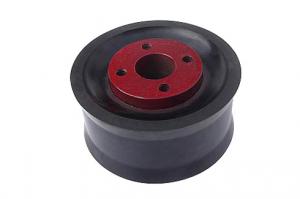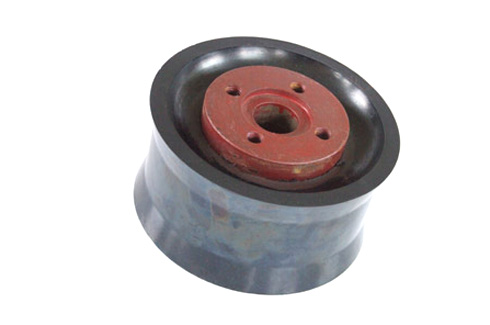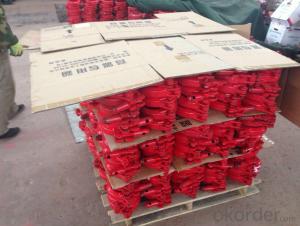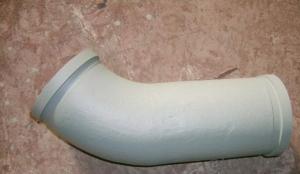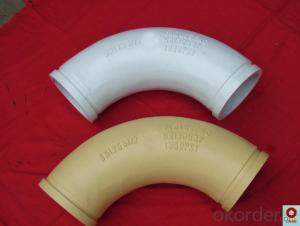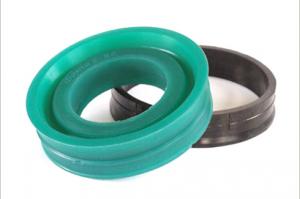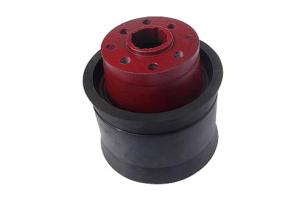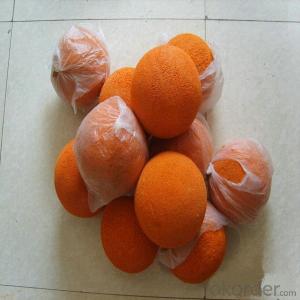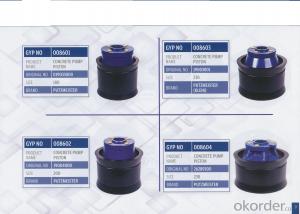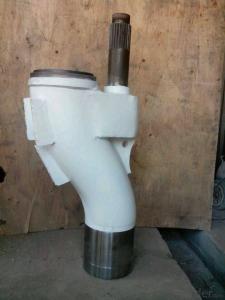Concrete Pump Zoomlion Ram Piston DN180 & DN200
- Loading Port:
- China Main Port
- Payment Terms:
- TT OR LC
- Min Order Qty:
- -
- Supply Capability:
- -
OKorder Service Pledge
Quality Product, Order Online Tracking, Timely Delivery
OKorder Financial Service
Credit Rating, Credit Services, Credit Purchasing
You Might Also Like
Brand: Schwing, Putzmeister, Sany,Zoomlion, IHI, Kyokuto, Sermac
Size: DN180 & DN200
Other products:
1) ST52 steel pipe, elbow, reducer
2) Wear-resisting board and Cuts ink
3) Coupling and seal ring for Putzmeister,Schwing, Sany
4) Rubber hose
5) Cleaning series and others
- Q: Are there any specific guidelines for the selection and installation of hydraulic components in concrete pump spare parts?
- Yes, there are specific guidelines for the selection and installation of hydraulic components in concrete pump spare parts. It is crucial to consider factors such as the pump's maximum pressure and flow rate, compatibility of components with the pump's system, and the quality and reliability of the components. Additionally, proper installation techniques and following manufacturer recommendations are essential to ensure optimal performance and longevity of the hydraulic system in concrete pump spare parts.
- Q: What is the function of a concrete pump hopper grate pin?
- The function of a concrete pump hopper grate pin is to securely hold the grate in place, preventing it from shifting or becoming dislodged during the concrete pumping process.
- Q: How often do I need to replace concrete pump spare parts?
- The frequency of replacing concrete pump spare parts largely depends on the usage and maintenance of the pump. However, it is generally recommended to inspect and replace worn-out or damaged parts regularly to ensure optimal performance and prevent any potential breakdowns.
- Q: How often should concrete pump pressure gauges be inspected and replaced?
- Concrete pump pressure gauges should be inspected regularly to ensure their accuracy and functionality. The frequency of inspection and replacement may vary depending on the specific conditions and usage of the concrete pump. However, as a general guideline, it is recommended to inspect and replace pressure gauges at least once a year or after every 500 pumping hours, whichever comes first. This regular inspection and replacement schedule helps to avoid any potential inaccuracies or malfunctions that could compromise the safety and efficiency of the concrete pumping operations. Additionally, it is important to follow the manufacturer's recommendations and guidelines for pressure gauge maintenance and replacement to ensure optimal performance and longevity.
- Q: How to diagnose the blockage in the inlet of concrete pump?
- If it doesn't work, you'll have to clean it up manually and rule it out.
- Q: How often should hopper agitator shaft bearings be inspected or replaced in a concrete pump?
- The frequency of inspecting or replacing hopper agitator shaft bearings in a concrete pump can depend on various factors such as the manufacturer's recommendations, the operating conditions, and the maintenance history of the pump. However, as a general guideline, it is recommended to inspect these bearings at least once a year or every 500-1000 hours of operation, whichever comes first. Regular inspections should include checking for any signs of wear, damage, or excessive play in the bearings. If any abnormalities are detected during the inspection, immediate action should be taken to address the issue. In some cases, lubrication or adjustment may be sufficient to resolve minor problems, while more severe damage or wear may require the replacement of the bearings. It is important to note that the hopper agitator shaft bearings play a crucial role in the smooth and efficient operation of the concrete pump. Neglecting regular inspections or delaying necessary replacements can lead to increased downtime, reduced productivity, and potential safety hazards. Therefore, it is recommended to follow the manufacturer's guidelines and consult with experienced technicians or specialists for a more accurate assessment of the inspection and replacement intervals specific to your concrete pump.
- Q: How often should hopper grate levers be inspected or replaced in a concrete pump?
- Hopper grate levers in a concrete pump should be inspected regularly, ideally after every use or at least once a week, to ensure they are in proper working condition. Depending on the wear and tear, they may need to be replaced periodically to maintain the efficiency and safety of the pump.
- Q: What do these types of concrete pumps mean?
- HBT represents the ground pump (tow pump). 80 represents the theoretical throughput per hour, and 16 is the maximum outlet pressure of 16 MPa
- Q: What is the purpose of a concrete pump accumulator?
- The concrete pump accumulator serves the purpose of storing energy and ensuring a continuous and uniform flow of concrete while pumping. It acts as a intermediary between the pump and the delivery line, guaranteeing a smooth and uninterrupted delivery of concrete. The accumulator functions by compressing air or nitrogen, which is then utilized to propel the concrete through the pipeline when the pump is not actively operating. This aids in maintaining pressure and preventing any obstructions or irregularities in the flow of concrete. Additionally, the accumulator can reduce the wear and tear on the pump by absorbing pressure fluctuations and providing a more controlled and consistent flow of concrete. In summary, the concrete pump accumulator aims to enhance the efficiency, reliability, and performance of the pumping process.
- Q: What are the different types of concrete pump hopper screens?
- The different types of concrete pump hopper screens include wire mesh screens, perforated plate screens, and synthetic fiber screens.
Send your message to us
Concrete Pump Zoomlion Ram Piston DN180 & DN200
- Loading Port:
- China Main Port
- Payment Terms:
- TT OR LC
- Min Order Qty:
- -
- Supply Capability:
- -
OKorder Service Pledge
Quality Product, Order Online Tracking, Timely Delivery
OKorder Financial Service
Credit Rating, Credit Services, Credit Purchasing
Similar products
Hot products
Hot Searches
Related keywords
